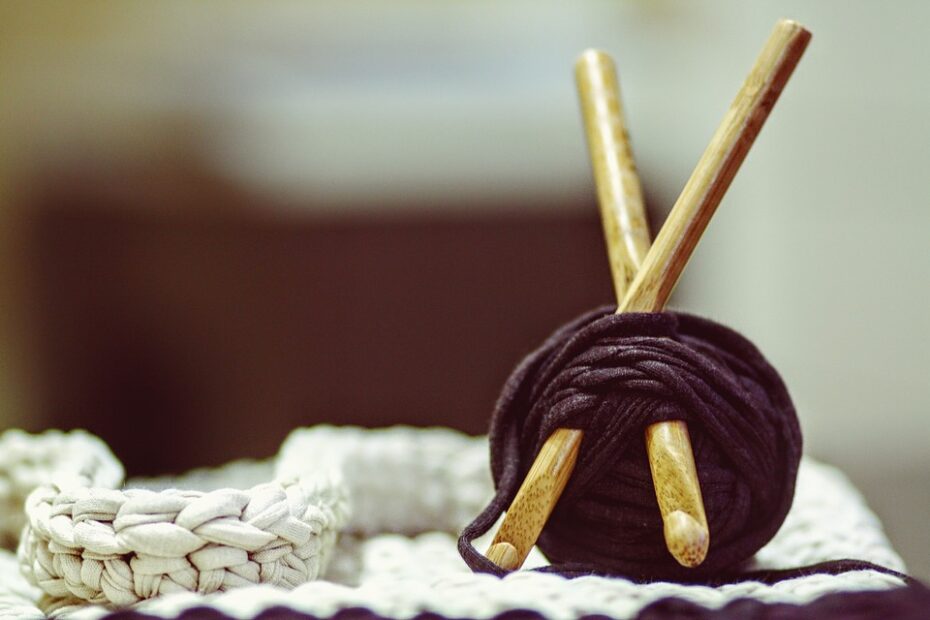Knitting is a very ancient type of craft, and it counts in his history hundreds, and perhaps thousands of years. Knitting is essentially one of the most interesting and favorite activities of the female sex at the moment, although its roots go deep into antiquity.
Knitwear (socks and scarves, jackets and pullovers, sweaters, hats and mittens, skirts and even coats) were, are and will always be in fashion. Knitted things and accessories will easily accentuate your individuality and your own unique style, keep you warm in the bitterest cold weather and give a good mood of warmth and comfort. Besides knitted by your own hand things will show everyone around you (colleagues, relatives, friends and acquaintances) that you are also a great hostess.
History of knitting
The exact date of hand knitting is not set, and how can it be? We can only guess, making assumptions and hypotheses from the findings of archaeologists.
Knitwear found by archaeologists
In Peru (the Republic of Peru is in South America, in the XII century in the territory of Peru arose the Inca Empire), archaeologists found a knitted belt with a wonderful hummingbird pattern (scientists date it to the III century AD).
In Egypt (the official name of the country is the Arab Republic of Egypt, located in northeast Africa and the Sinai Peninsula), in the city of Antinoy archeologists found a small child’s knitted sock with bright colored stripes (sock dates from about IV-V century AD). An interesting fact is that the big toe in this sock was separated from the rest of the fingers, specifically for slipping into the strap of the sandal.
Knitting needles have been found in tombs in Germany, as well as long wool pants to which a knitted sock was sewn (this find dates from about IV-V century AD).
The art of weaving as well as embroidery was common in ancient Egypt (3000-2400 BC). Embroidered fabrics, jewelry have been found by archaeologists in tombs at the burial of kings.
Knitting tools
In the past, needlewomen knitted simply on their fingers, and only a certain time later tools for knitting were invented – needles and crochet.
In Egypt, in the capital of the state El-Fostat (now Cairo – the capital of Egypt, is the largest city in Africa) were found fragments of incredibly beautiful Arabic knitting (the findings date back to about VII-IX century AD). The complex ornamentation, the use of several colors give us the right to say that the Egyptians were skilled masters in knitting. A bit later we found a very small fragment of scarf with very similar ornamentation (the find dates back to about XII century A.D.).
Normans (Normans, Vikings) were Scandinavian tribes who ravaged European countries between VIII and XI centuries. Perhaps thanks to the Normans knitting spread to Europe. It is possible that the Scandinavians were among those who invented this art, because in Scandinavia the climate is quite harsh, and knitting is very important as a method of creating warm clothes.
The first needlework book
The first needlework book was published in France, way back in 1206. In this first historical book on knitting its author Etienne Poileau talked about the master knitters of hats.
Interesting fact: the national headdress of the Scots is precisely a knitted beret.
In the XIV-XV centuries already began to make hats (hoods), the very first models of knitted outerwear appeared.
Knitting in the paintings: in Germany, in the art gallery in Hamburg is still a church picture with the title “Madonna with knitting” (painted by Bertram in 1390). The painting depicts the Virgin Mary knitting a shirt for babies, and on 5 spokes!
The craft in the Middle Ages was exclusively for men, women at best were allowed to spin yarn. Women had to try hard to win back the opportunity to study knitting, men even staged various protests, which stated that they would not allow women to this craft.
Interesting fact
The first knitting machine
Initially, manual knitting was a purely male craft.
But the first knitting machine was invented back in the 16th century in 1589 by an English priest from Galverton named William Lee. The first knitting machine was used for knitting quite fashionable stockings at that time. However, Queen Elizabeth I of England refused the priest a patent on the grounds that stockings knitted by a knitting machine seemed much thicker than those sewn from silk by hand. Finally, the queen advised the priest to earn money by honest work. The Galverton priest moved to France, where in the French city of Rouen he founded the world’s first mechanical knitting workshop. The principle of even the first knitting machine has been preserved to this day even in modern models of various knitting machines.
In France, at the end of the 18th century, the first circular knitting machine was invented, and it knitted cloth in the form of a circle, or rather a tube – that was how stockings were made. Bound on that machine stockings soon completely superseded handmade work, because they were much cheaper.
In the 18th century men’s skinny pants – tights and long stockings that emphasized the form of legs perfectly became fashionable. Knitted jackets began to appear. In museums in Sweden at any time everyone can see a pair of antique silk sweaters.
